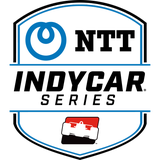
Robin Miller on IndyCar's desert debacle

If the IndyCar paddock could send a message to the few thousand souls who showed up at Phoenix International Raceway or the people trying to watch Saturday night's race on NBCSN, it would be brief and heartfelt:
We're sorry.
"They should refund everyone's money," one prominent driver said afterward.
Because the first oval-track show of 2017 was a 250-lap dud – 90 minutes of running in place where the leader couldn't lap last place because they were both running the same speed.
The only lead changes came on pit stops, and other than Josef Newgarden early and J.R. Hildebrand late, passing was passé. And an untimely caution removed any chance of drama, scrambled the front-runners and gave Simon Pagenaud a stress-free run to the checkered flag.
But the real downer is that it probably didn't have to be a snoozer.
Following IndyCar's return in 2016 after an 11-year absence, it was obvious something needed to be done about the aero package for this legendary, one-mile track that was built for Indy cars in 1964.
Last year's race was a carbon copy of what transpired on Saturday night so IndyCar staged a test last October to come up with a possible solution.
And Ryan Hunter-Reay felt like it was a success. "We tested different downforce configurations while running together and we found a solution," the 2014 Indianapolis 500 winner said.
The eye of the storm, according to the drivers and teams, was the undertray on the Dallara DW12. Running one without a hole in it allowed the cars to get closer and make passing possible. (And the hole in the under tray is to keep the cars on the ground if they spin and go backward on a superspeedway).
Hunter-Reay lobbied hard for IndyCar to change, but because all of the teams would have had to spend money to fill in the hole, it was decided to remain with the status quo until the new aero kits arrive in 2018.
After last February's open test at PIR, most of the veteran drivers correctly predicted that Saturday night's Desert Diamond Grand Prix of Phoenix would be a stinker without making that change.
"It doesn't make any sense to come back and put on the same show," said Hunter-Reay.
To be fair, car owners are always bitching about spending extra money with sponsorship dollars hard to secure, so maybe there wasn't a real push to make a change (except by the drivers).
But, looking at the big picture, IndyCar couldn't afford another stinker in Phoenix, and Saturday night could be the death knell to a destination that IndyCar needs to see succeed.
There were fewer people in attendance this year, and the ones who came were put off by 22 laps of caution (why not throw the red flag?) following a first-lap, five-car pileup and then by the drudgery of watching cars run in place. USAC’s Silver Crown prelim on Saturday afternoon was five times more entertaining.
GALLERY: LAP 1 CARNAGE AT PHOENIX
Rookie Ed Jones is good racer doing a damn good job for Dale Coyne, but in his first-ever oval race he managed to keep Dixon, Tony Kanaan and three-fourths of the Team Penske armada behind him for 20 laps.
The magic of a mile oval is traffic and how the leaders deal with it. But that was non-existent again on Saturday night, and Firestone's tires seemed to be too good and too consistent, so there was no major grip loss.
There is one year left on the Phoenix contract. PIR's Bryan Sperber has embraced IndyCar like few ISC tracks ever have, and his relationship with IndyCar's Jay Frye is a big reason why IndyCar is back in the desert where it belongs.
Talk of trying to run Long Beach and Phoenix back-to-back like the old days or possibly even make PIR the season finale is all good. And there's little doubt that next year's aero package will make the racing much better. It couldn't be any worse.
But the worry is, how do you get anybody who paid for Saturday night's abysmal show to come back in 2018?
"I think the fans deserve a better show than we gave them," said Tony Kanaan. "I hope they give us another chance."
Article originally on Racer.com
